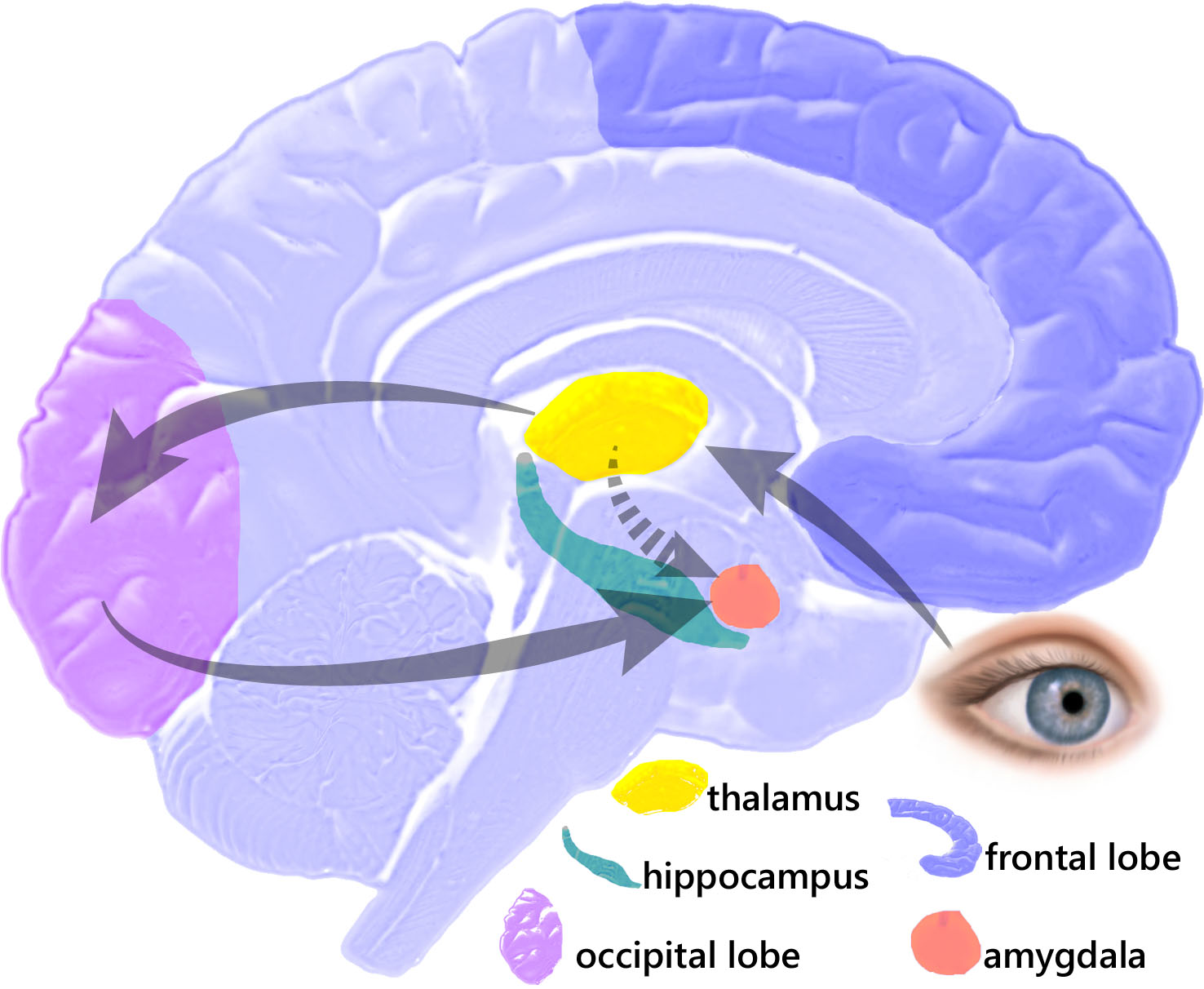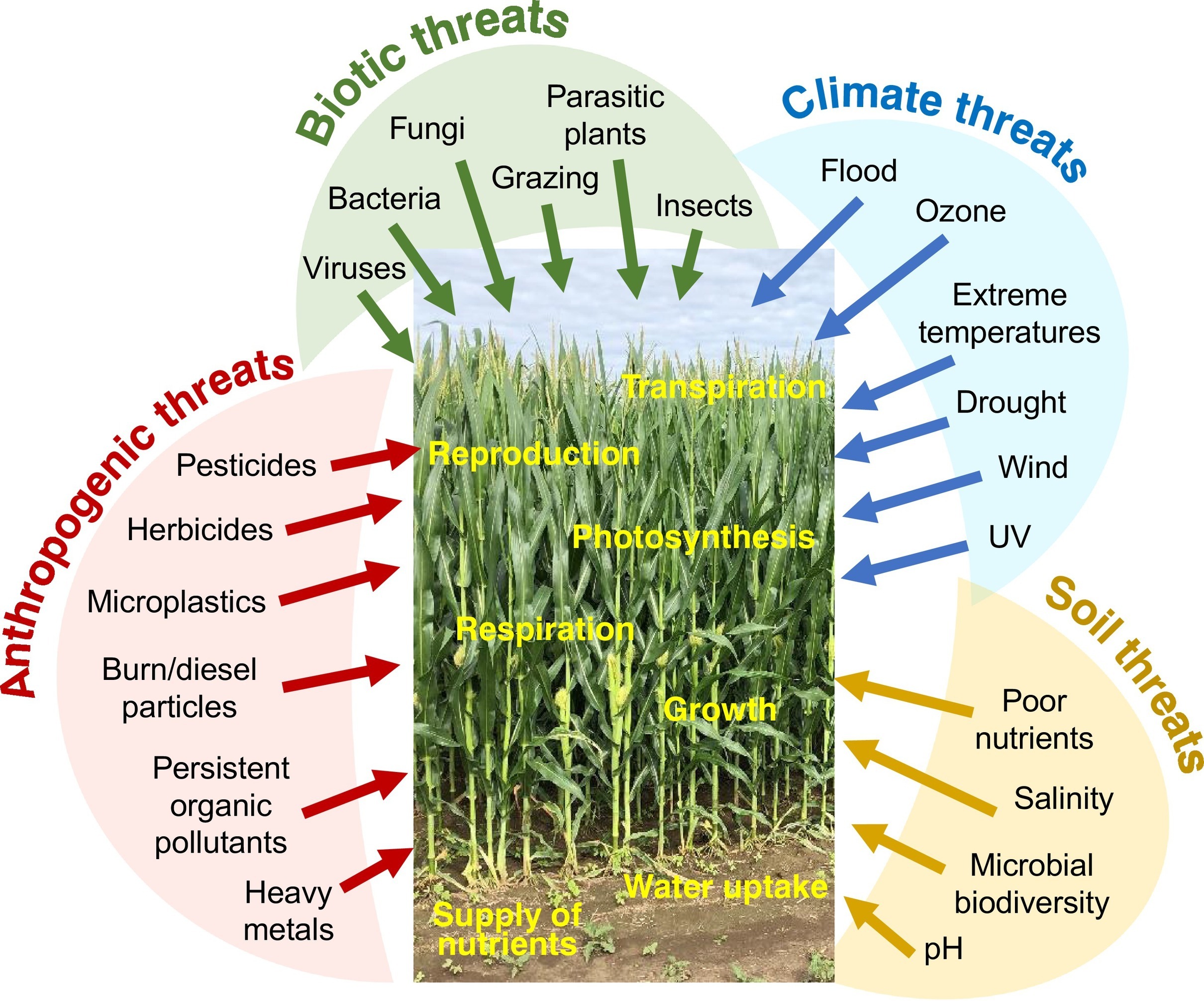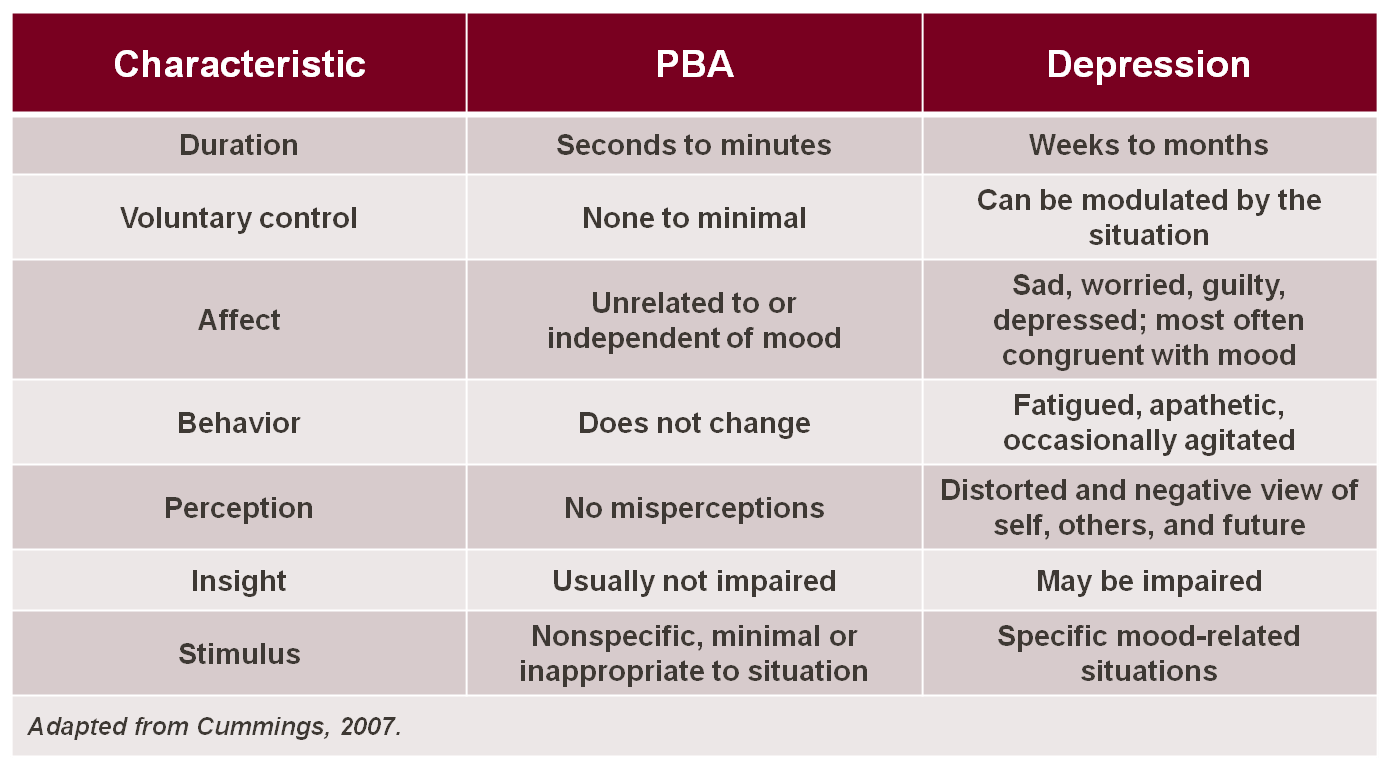|
Amygdala Hijack
An amygdala hijack refers to an immediate and overwhelming emotional response that is disproportionate to the actual stimulus because it has triggered a more significant perceived threat. The term was coined by Daniel Goleman in his 1996 book '' Emotional Intelligence: Why It Can Matter More Than IQ,'' and is recognized as a formal academic term within affective neuroscience. The brain consists of two hemispheres, each containing an amygdala—a small, almond-shaped structure located anterior to the hippocampus, near the temporal lobe. The amygdalae play a crucial role in detecting and learning which aspects of our environment are emotionally significant. They are essential for generating emotions, particularly negative emotions such as fear. Amygdala activation often happens when people see a potential threat. This activation helps individuals make decisions based on past related memories. Definition The output of sense organs is first received by the thalamus. Part of the th ... [...More Info...] [...Related Items...] OR: [Wikipedia] [Google] [Baidu] |
Hypothalamic–pituitary–adrenal Axis
The hypothalamic–pituitary–adrenal axis (HPA axis or HTPA axis) is a complex set of direct influences and feedback interactions among three components: the hypothalamus (a part of the brain located below the thalamus), the pituitary gland (a pea-shaped structure located below the hypothalamus), and the adrenal (also called "suprarenal") glands (small, conical organs on top of the kidneys). These organs and their interactions constitute the HPS axis. The HPA axis is a major neuroendocrine system that controls reactions to stress and regulates many body processes, including digestion, immune responses, mood and emotions, sexual activity, and energy storage and expenditure. It is the common mechanism for interactions among glands, hormones, and parts of the midbrain that mediate the general adaptation syndrome (GAS). While steroid hormones are produced mainly in vertebrates, the physiological role of the HPA axis and corticosteroids in stress response is so fun ... [...More Info...] [...Related Items...] OR: [Wikipedia] [Google] [Baidu] |
Neuropsychology
Neuropsychology is a branch of psychology concerned with how a person's cognition and behavior are related to the brain and the rest of the nervous system. Professionals in this branch of psychology focus on how injuries or illnesses of the brain affect cognitive and behavioral functions. It is both an experimental and clinical field of patient-focused psychology. Thus aiming to understand how behavior and cognition are influenced by brain function. It is also concerned with the diagnosis and treatment of behavioral and cognitive effects of neurological disorders. Whereas classical neurology focuses on the pathology of the nervous system and classical psychology is largely divorced from it, neuropsychology seeks to discover how the brain correlates with the mind through the study of neurological patients. It thus shares concepts and concerns with neuropsychiatry and with behavioral neurology in general. The term ''neuropsychology'' has been applied to lesion studies in huma ... [...More Info...] [...Related Items...] OR: [Wikipedia] [Google] [Baidu] |
Fear
Fear is an unpleasant emotion that arises in response to perception, perceived dangers or threats. Fear causes physiological and psychological changes. It may produce behavioral reactions such as mounting an aggressive response or fleeing the threat, commonly known as the fight-or-flight response. Extreme cases of fear can trigger an immobilized freeze response. Fear in humans can occur in response to a present stimulus (physiology), stimulus or anticipation of a future threat. Fear is involved in some mental disorders, particularly anxiety disorders. In humans and other animals, fear is modulated by cognition and learning. Thus, fear is judged as rational and appropriate, or irrational and inappropriate. Irrational fears are phobias. Fear is closely related to the emotion anxiety, which occurs as the result of often future threats that are perceived to be uncontrollable or unavoidable. The fear response serves survival and has been preserved throughout evolution. Even simple ... [...More Info...] [...Related Items...] OR: [Wikipedia] [Google] [Baidu] |
Emotional Issues
Emotions are physical and mental states brought on by neurophysiological changes, variously associated with thoughts, feelings, behavioral responses, and a degree of pleasure or displeasure. There is no scientific consensus on a definition. Emotions are often intertwined with mood, temperament, personality, disposition, or creativity. Research on emotion has increased over the past two decades, with many fields contributing, including psychology, medicine, history, sociology of emotions, computer science and philosophy. The numerous attempts to explain the origin, function, and other aspects of emotions have fostered intense research on this topic. Theorizing about the evolutionary origin and possible purpose of emotion dates back to Charles Darwin. Current areas of research include the neuroscience of emotion, using tools like PET and fMRI scans to study the affective picture processes in the brain. From a mechanistic perspective, emotions can be defined as "a posi ... [...More Info...] [...Related Items...] OR: [Wikipedia] [Google] [Baidu] |
Stress (biology)
Stress, whether physiological, biological or psychological, is an organism's response to a stressor, such as an environmental condition or change in life circumstances. When stressed by stimuli that alter an organism's environment, multiple systems respond across the body. In humans and most mammals, the autonomic nervous system and Hypothalamic–pituitary–adrenal axis, hypothalamic-pituitary-adrenal (HPA) axis are the two major systems that respond to stress. Two well-known hormones that humans produce during stressful situations are adrenaline and cortisol. The Sympathoadrenal system, sympathoadrenal medullary axis (SAM) may activate the fight-or-flight response through the sympathetic nervous system, which dedicates energy to more relevant bodily systems to Acute stress reaction, acute adaptation to stress, while the parasympathetic nervous system returns the body to homeostasis. The second major physiological stress-response center, the HPA axis, regulates the release ... [...More Info...] [...Related Items...] OR: [Wikipedia] [Google] [Baidu] |
Pseudobulbar Affect
Pseudobulbar affect (PBA), or emotional incontinence, is a type of affect disorder connected to Neurological condition, neurological conditions. It is characterized by brief, intense, uncontrollable episodes of crying or laughter, laughing. The affect is triggered by emotionally trivial or neutral stimuli, that not necessarily relate to the emotional state. PBA Sequela, is a consequence of another neurologic disorder or Brain damage, brain injury. Patients may find themselves crying uncontrollably at something that is only slightly sad, being unable to stop themselves for several minutes. Episodes may also be Mood congruence, mood-incongruent: a patient may laugh uncontrollably when angry or frustrated, for example. Sometimes, the episodes may switch between emotional states, resulting in the patient crying uncontrollably before dissolving into fits of laughter. PBA is a severe disruption of momentary emotional expression rather than the persistent, excessive, and pervasive dist ... [...More Info...] [...Related Items...] OR: [Wikipedia] [Google] [Baidu] |
Emotional Intelligence
Emotional intelligence (EI), also known as emotional quotient (EQ), is the ability to perceive, use, understand, manage, and handle emotions. High emotional intelligence includes emotional recognition of emotions of the self and others, using emotional information to guide thinking and behavior, discerning between and labeling of different feelings, and adjusting emotions to adapt to environments. This includes emotional literacy. The term first appeared in 1964, gaining popularity in the 1995 bestselling book '' Emotional Intelligence'' by psychologist and science journalist Daniel Goleman. Some researchers suggest that emotional intelligence can be learned and strengthened, while others claim that it is innate. Various models have been developed to measure EI: The ''trait model'' focuses on self-reporting behavioral dispositions and perceived abilities; the ''ability model'' focuses on the individual's ability to process emotional information and use it to navigate the soc ... [...More Info...] [...Related Items...] OR: [Wikipedia] [Google] [Baidu] |
Amygdala
The amygdala (; : amygdalae or amygdalas; also '; Latin from Greek language, Greek, , ', 'almond', 'tonsil') is a paired nucleus (neuroanatomy), nuclear complex present in the Cerebral hemisphere, cerebral hemispheres of vertebrates. It is considered part of the limbic system. In Primate, primates, it is located lateral and medial, medially within the temporal lobes. It consists of many nuclei, each made up of further subnuclei. The subdivision most commonly made is into the Basolateral amygdala, basolateral, Central nucleus of the amygdala, central, cortical, and medial nuclei together with the intercalated cells of the amygdala, intercalated cell clusters. The amygdala has a primary role in the processing of memory, decision making, decision-making, and emotions, emotional responses (including fear, anxiety, and aggression). The amygdala was first identified and named by Karl Friedrich Burdach in 1822. Structure Thirteen Nucleus (neuroanatomy), nuclei have been identif ... [...More Info...] [...Related Items...] OR: [Wikipedia] [Google] [Baidu] |
Joseph E
Joseph is a common male name, derived from the Hebrew (). "Joseph" is used, along with " Josef", mostly in English, French and partially German languages. This spelling is also found as a variant in the languages of the modern-day Nordic countries. In Portuguese and Spanish, the name is "José". In Arabic, including in the Quran, the name is spelled , . In Kurdish (''Kurdî''), the name is , Persian, the name is , and in Turkish it is . In Pashto the name is spelled ''Esaf'' (ايسپ) and in Malayalam it is spelled ''Ousep'' (ഔസേപ്പ്). In Tamil, it is spelled as ''Yosepu'' (யோசேப்பு). The name has enjoyed significant popularity in its many forms in numerous countries, and ''Joseph'' was one of the two names, along with '' Robert'', to have remained in the top 10 boys' names list in the US from 1925 to 1972. It is especially common in contemporary Israel, as either "Yossi" or "Yossef", and in Italy, where the name "Giuseppe" was the most co ... [...More Info...] [...Related Items...] OR: [Wikipedia] [Google] [Baidu] |
Limbic
The limbic system, also known as the paleomammalian cortex, is a set of brain structures located on both sides of the thalamus, immediately beneath the medial temporal lobe of the cerebrum primarily in the forebrain.Schacter, Daniel L. 2012. ''Psychology''.sec. 3.20 Its various components support a variety of functions including emotion, behavior, long-term memory, and olfaction. The limbic system is involved in lower order emotional processing of input from sensory systems and consists of the amygdala, mammillary bodies, stria medullaris, central gray and dorsal and ventral nuclei of Gudden. This processed information is often relayed to a collection of structures from the telencephalon, diencephalon, and mesencephalon, including the prefrontal cortex, cingulate gyrus, limbic thalamus, hippocampus including the parahippocampal gyrus and subiculum, nucleus accumbens (limbic striatum), anterior hypothalamus, ventral tegmental area, midbrain raphe nuclei, habenular commissure, e ... [...More Info...] [...Related Items...] OR: [Wikipedia] [Google] [Baidu] |
Fight-or-flight Response
The fight-or-flight or the fight-flight-freeze-or-fawn (also called hyperarousal or the acute stress response) is a physiological reaction that occurs in response to a perceived harmful event, attack, or threat to survival. It was first described by Walter Bradford Cannon in 1915. His theory states that animals react to threats with a general discharge of the sympathetic nervous system, preparing the animal for fighting or fleeing. More specifically, the adrenal medulla produces a hormonal cascade that results in the secretion of catecholamines, especially norepinephrine and epinephrine. The hormones estrogen, testosterone, and cortisol, as well as the neurotransmitters dopamine and serotonin, also affect how organisms react to stress. The hormone osteocalcin might also play a part. This response is recognised as the first stage of the general adaptation syndrome that regulates stress responses among vertebrates and other organisms. Name Originally understood as the "figh ... [...More Info...] [...Related Items...] OR: [Wikipedia] [Google] [Baidu] |






